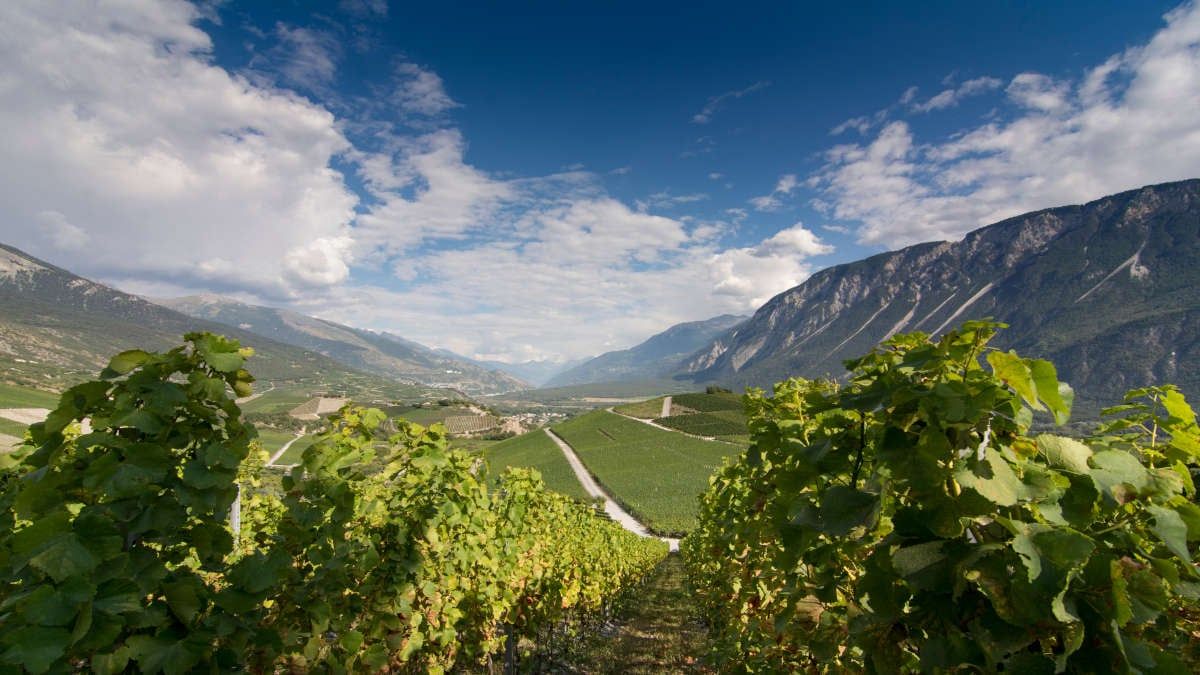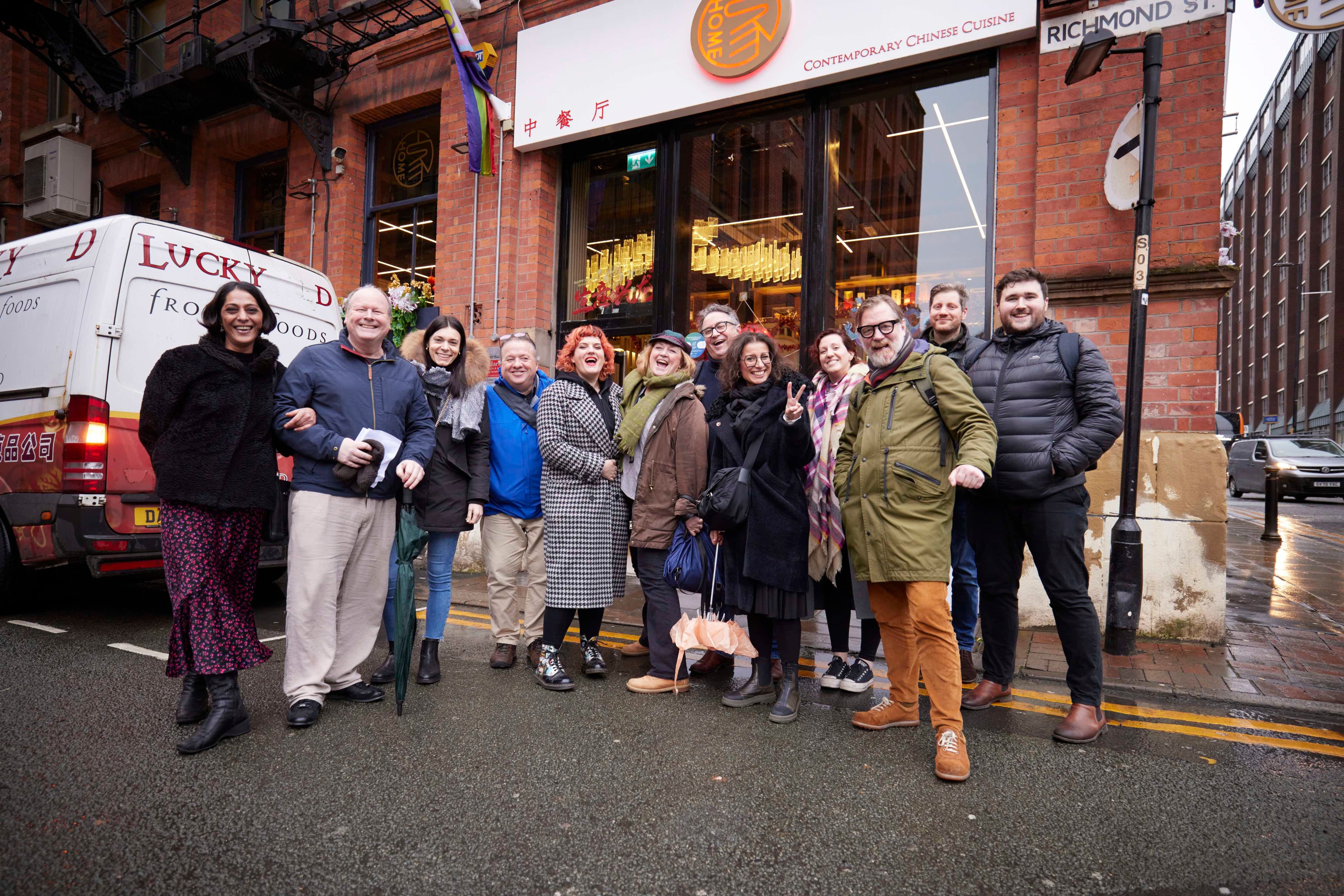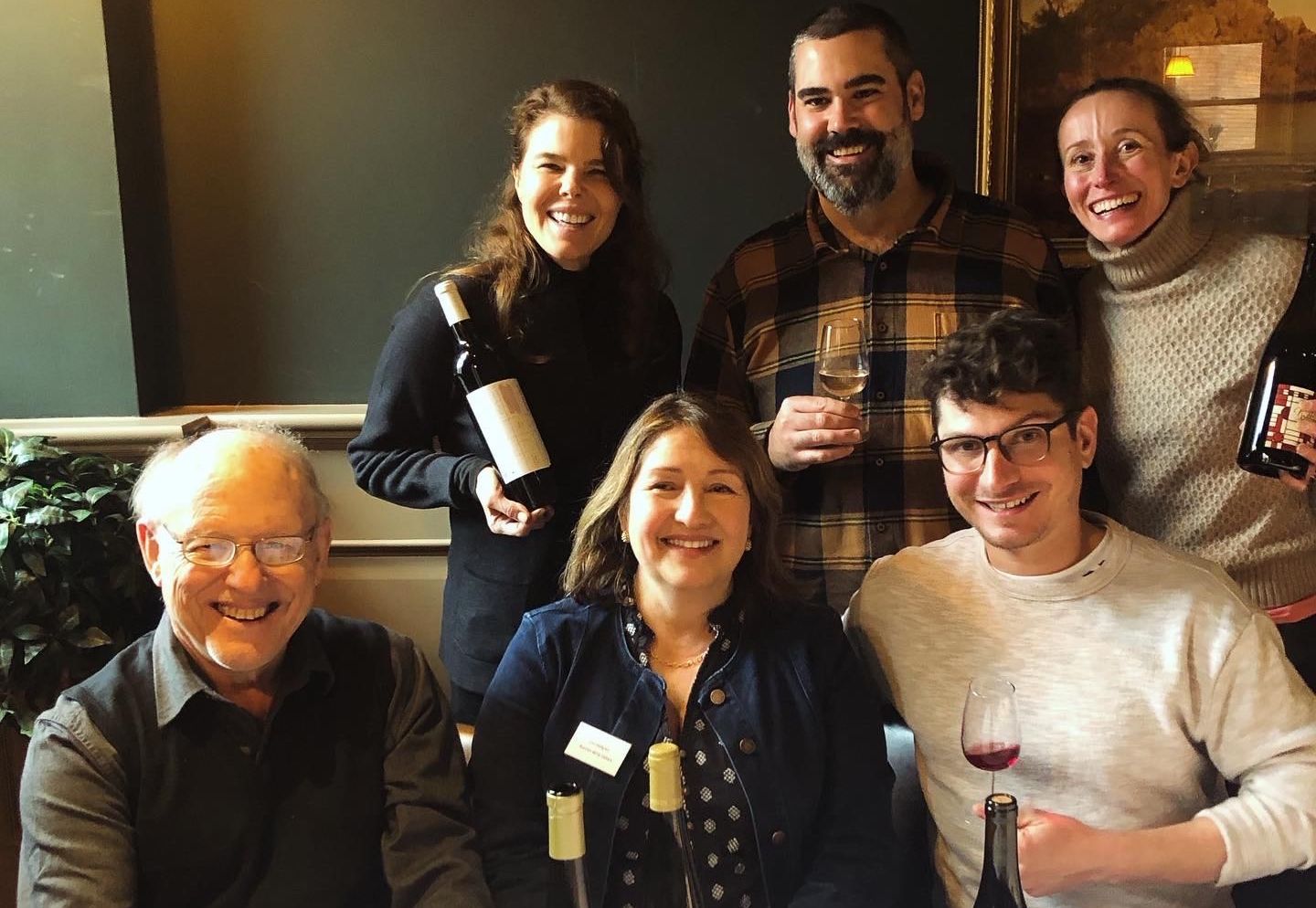Does the English wine sector need signature still grape varieties to help take it to the next level? Marasby’s Simon Huntington set out to find out.
Pinot Gris and Pinot Blanc are generating an outsize level of interest in the UK wine industry. On many of Marasby’s UK vineyard visits, it is the small cuvées of Pinot Gris or Pinot Blanc, tucked away at the back of English or Welsh wineries in an egg-fermenter or a one-off experimental barrel, that get the winemakers truly excited.
Many in the English wine industry are saying that the white Pinot grapes have the potential to form a delicious and unique new signature wine style in the UK. This could be a UK equivalent of New Zealand Sauvignon, Chilean Merlot, or Aussie Shiraz – a recognisable grape and style that would propel the whole industry forwards.
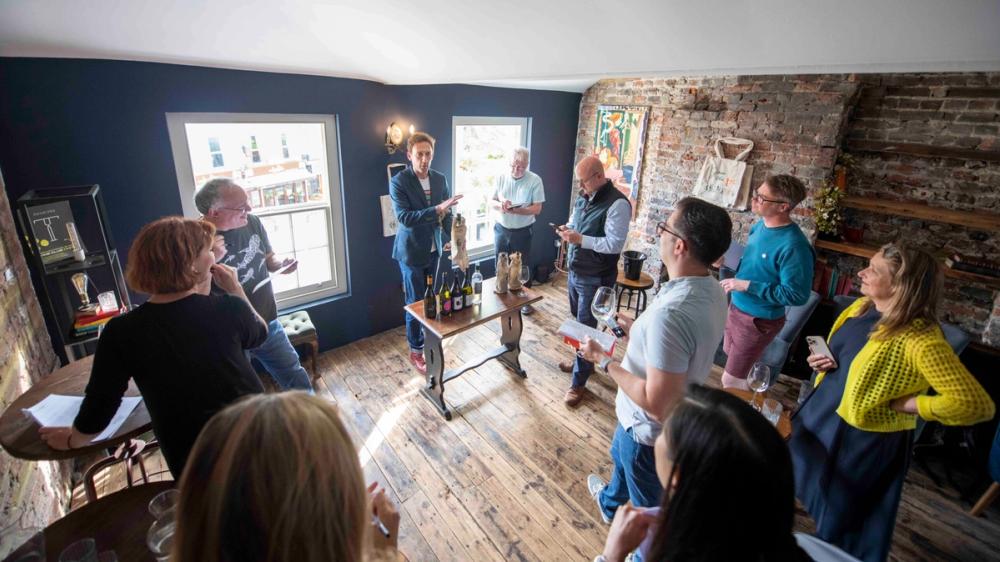
Simon Huntington sets out what the tasting is looking to achieve to the panel
Those who champion this idea say that unlike Bacchus, which has a divisive flavour profile, or Chardonnay, which comes with heavy expectations, the typical consumer comes to wines made from the white Pinots with a comparatively open mind. UK vineyard owners who make a wide range of still wines often tell us that Pinot Gris and Pinot Blanc are their fastest and best sellers. So, the potential for a signature grape and style certainly seems to be there.
Yet, right now, still wines made from Pinot Gris and Pinot Blanc are a tiny component of English and Welsh wine production. Still wine accounts for just 30-40% of UK winemaking. Pinot Gris is only our ninth most planted variety, behind little-known grapes (in terms of the average drinker) like Solaris and Rondo. Pinot Blanc isn’t even in the top 10 at all.
Test and trial
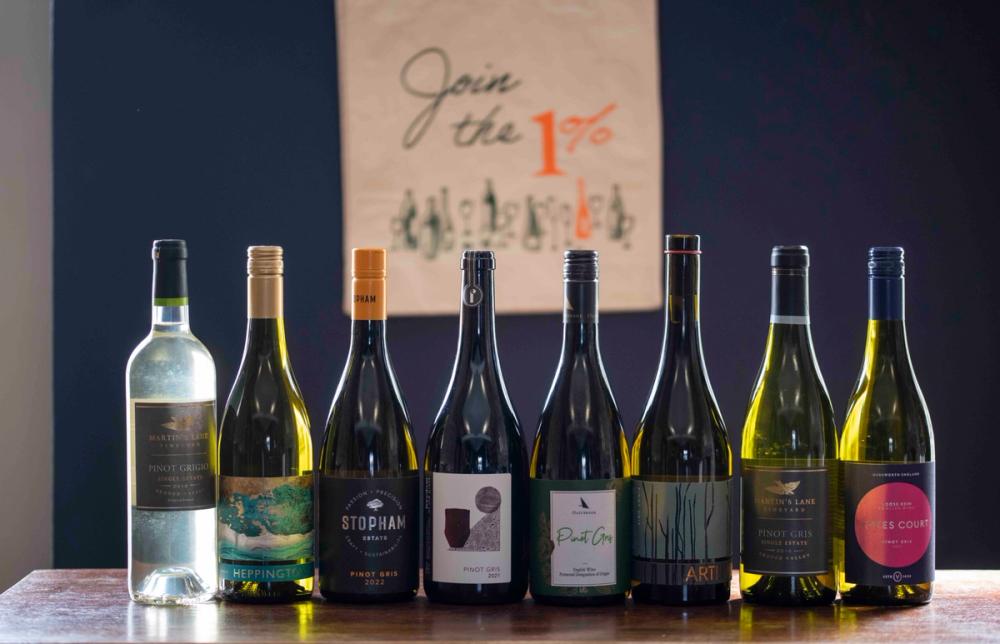
The line up of English Pinot Gris in the tasting
So, does this tiny pioneering output justify the excitement? To find out, Marasby gathered what we understand to be the most extensive selection of English Pinot Gris and Pinot Blanc ever assembled at one tasting. We invited a panel of professional wine buyers and industry experts to taste them blind and answer three questions:
What were their overall thoughts on the quality of the wines? Did the wines show a distinctively ‘English’ style? Did they agree that, based on the wines tasted, one of the white Pinots could become a signature grape for the UK?

And the English Pinot Blancs…
The Panel
This was Marasby’s most diverse panel to date, representing a wide cross-section of industry expertise and opinion. From the world of fine dining, we had Charles Beaini, wine executive at Kerridge’s Bar & Grill, and Davide Renna, wine manager at Hide. From the trade we had natural wine champion Doug Wregg of Les Caves de Pyrene and fine wine-focused Matt Tipping, chief executive from Jeroboams.

The panel of tasters was selected for their experience of English wine
These were joined by journalist and winemaker Chris Wilson of Gutter & Stars, and UK wine digital content creators John Mobbs (@greatbritishwine) and Allie Cope (@englishvineyards). Steve Parker of British Cheese on Toast, and Ed Dallimore of Vineyards of Great Britain, attended as published British food and wine authors.
Panel reactions
Overall, the panel was very excited by the quality of the wines. Davide Renna of Hide said: “It’s clear they have great potential. I can’t wait to see them in five years’ time.” Grace Taylor of Tap & Bottle added: “I was surprised by how elegant and well-balanced the wines were throughout the tasting.”
Yet, with such a diverse panel of tasters, it’s not surprising there was a wide range of opinions, particularly over the relative quality of the Pinot Gris vs. the Pinot Blanc.
The opinions fell broadly into two camps.
First, those looking for cleaner, more accessible, and commercial wine styles admired the consistency of the Pinot Gris flight. Within this flight were many wines that, according to Jeroboams’ Matt Tipping, any drinker “could order in a restaurant, enjoy, and think that it is a good bottle of dry white wine that compares favourably to other crisp, dry whites from around the world.”
British food and wine writer Steve Parker agreed, saying that consumers “could buy and enjoy most of the Pinot Gris as good dry white wines. That’s a long way ahead of where we were five years ago.”

John Mobbs sided more with the Pinot Blancs tasted in the line up vs the Pinot Gris
The panel found the flight of Pinot Blanc much more variable in quality and style, and of likely more appeal to hardcore wine enthusiasts than the typical consumer. John Mobbs said: “The best examples of Pinot Blanc were more interesting than the best of Pinot Gris. But I also found that there was a higher proportion of the Blanc that I didn’t enjoy as much compared to the Gris.”
On the other hand, a second group focused more favourably on the winemaking and style variation within the Pinot Blanc. These panellists were invigorated, rather than put off by, the diversity of the flight. Natural wine champion Doug Wregg of Les Caves de Pyrene “looks for terroir,” and found this “particularly in the Pinot Blanc.”
Chris Wilson of Gutter & Stars added: “It is nice to see experimentation. I’ve been trying to get some Pinot Blanc fruit for a while now. That’s the grape I’m interested in – I think it’s really versatile.”
Is there a distinctive English White Pinot Style?
Overall, the panel felt there was too much regional and winemaking variation to talk of an ‘English’ style yet. The wines made from Essex-sourced grapes certainly offered distinctively weighty and concentrated fruit character, regardless of winery location, or winemaking style. Yet even within this one region, there was too much variation between the output of different wineries to talk of an ‘Essex’ style, let alone an ‘English’ style.
Yet as Matt Tipping identified, “clearly these wines are not from California or Australia. They’re clearly not from a hot climate. So, there is a consistent character running through them – it just happens to be a cool-climate character.”
The panel’s verdict
The verdict of the Marasby panel is that there are now reliably delicious, complex, and well-priced white wines available from England, made both from Pinot Gris and Pinot Blanc grapes.
Consumers who enjoy crisp, dry whites, can now buy Pinot Gris from many UK vineyards, and be assured that it will compare favourably to other dry whites they’ve enjoyed from around the world. The wines are consistently well-made and well-balanced, and offer ripe, clean, fruit character.

English wine producer Chris Wilson from Gutter & Stars
Those into experimentation and who enjoy more unusual flavours and textures will find plenty of diversity and interest in English Pinot Blanc, including delicious orange, skin contact, and oak- influenced wines to go with the more straightforwardly commercial styles.
Yet the question is… does England really need a signature grape?
If there’s one thing that has been a signature of the UK wine market, it is that over centuries of trading we have learned to love the variety of choice that comes from importing and selling wines from all over the world. That’s what made London the traditional centre of the world wine trade. We are just as unlikely to give up enjoying such a wide variety of wines in favour of one signature English style as we are to give up wanting to eat Indian, or Thai, or French, or Italian food.
The fantastic thing about the UK wine industry is that, in just a few short years, it has already developed an incredible diversity of grapes and flavours, textures and styles. That the industry is free from draconian regulations is a great strength, allowing our winemakers to follow their interests, to experiment, and to make great wines that will appeal to a wide range of consumers.
The most important thing for the industry is not to attempt to develop a signature grape. It is that our winemakers are clear about what they’re trying to achieve, who it is they’re trying to appeal to, and to make great wine that fits the brief.
England’s signature can, and should be, the consistently high quality of its diverse output.
Wines Tasted
Pinot Gris:
Artelium Pinot Gris 2021
Freedom of the Press Pinot Gris 2021
Heppington: Pinot Gris 2021
Martins Lane Vineyard Pinot Grigio 2018
Martins Lane Vineyard Pinot Gris 2016
Oastbrook Pinot Gris 2022
Stopham Pinot Gris 2022
Yotes Pinot Gris 2021
Pinot Blanc:
BSixTwelve Pinot Blanc 2020
BSixTwelve Orange Pinot Blanc 2020
Missing Gate Pinot Blanc 2020
Oastbrook Pinot Blanc 2022
Stopham Pinot Blanc 2022
Tillingham: Pinot Blanc NV (2020/21)
Yotes Pinot Blanc 2021
- For individual tasting notes on each of the wines, visit https://marasby.com/wt/white-pinot- pioneers-tasting-notes/
- For more about what Marasby and the work it does with English wine click here.



